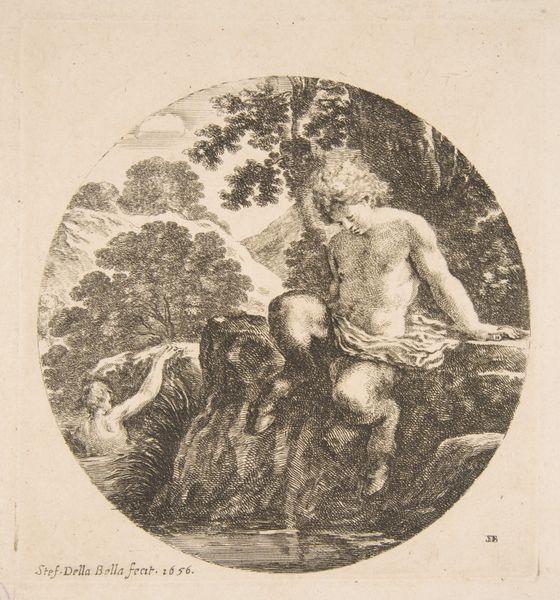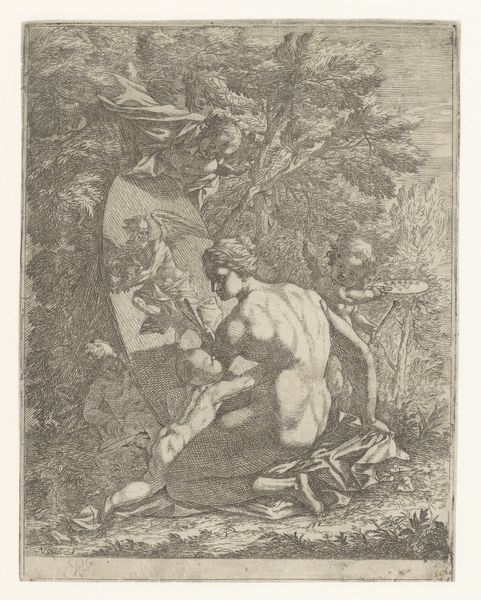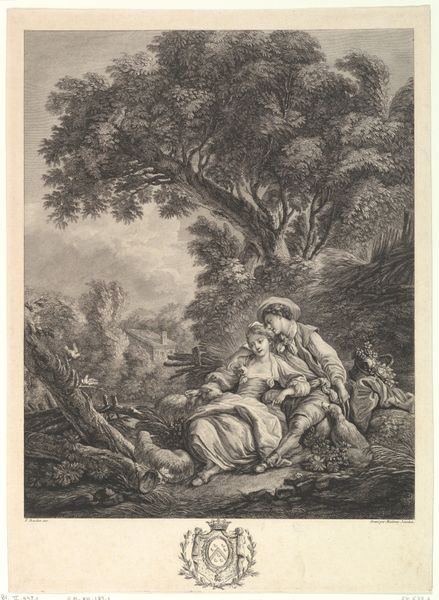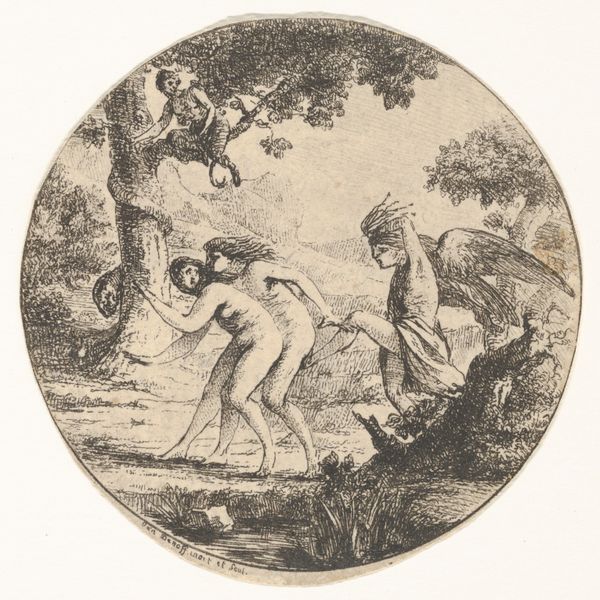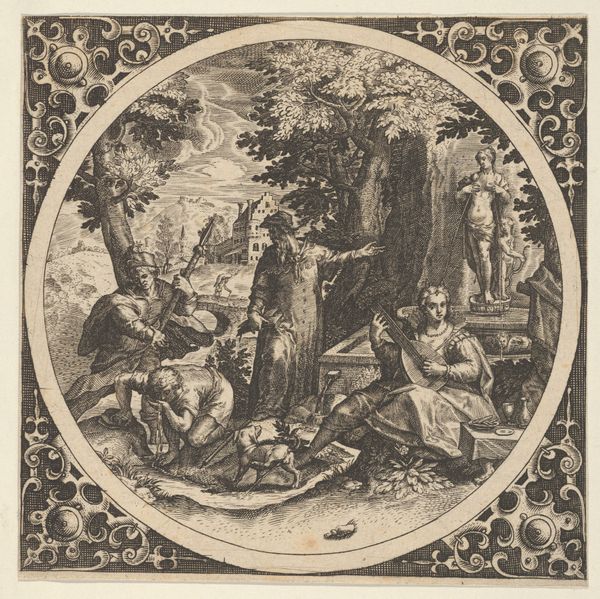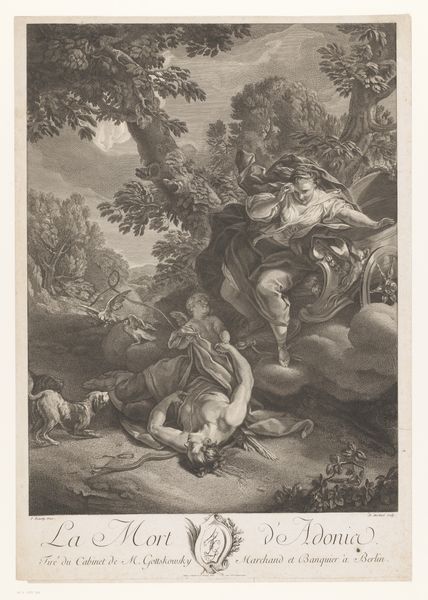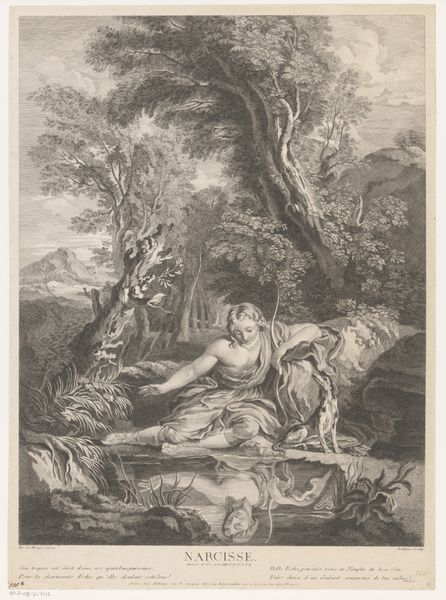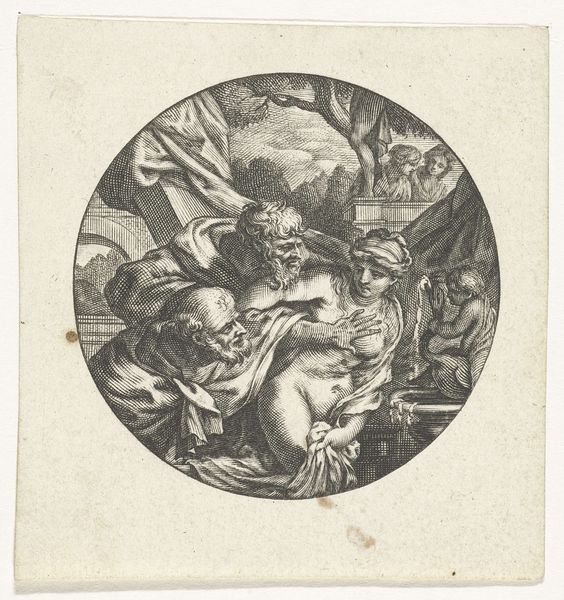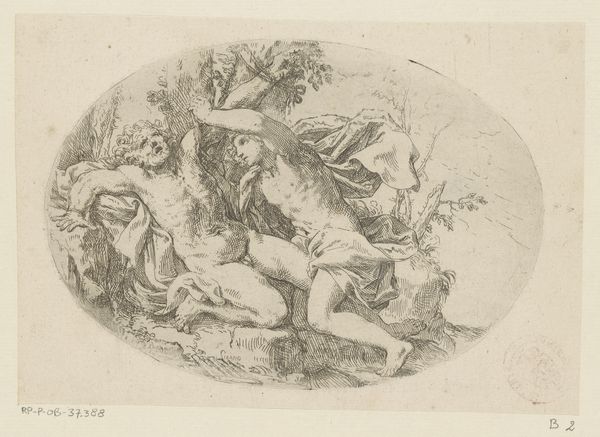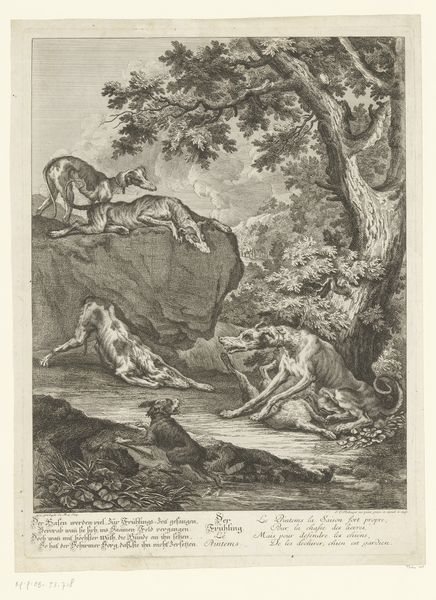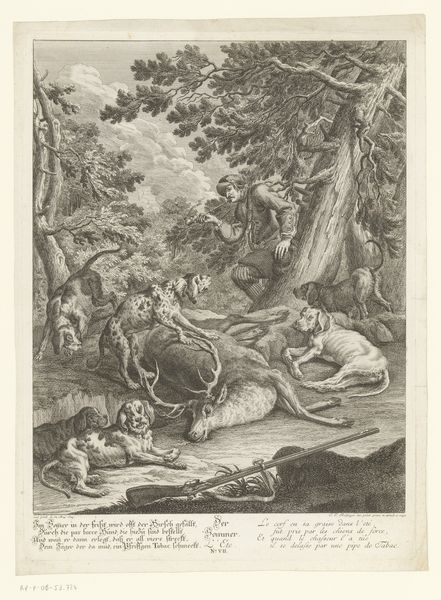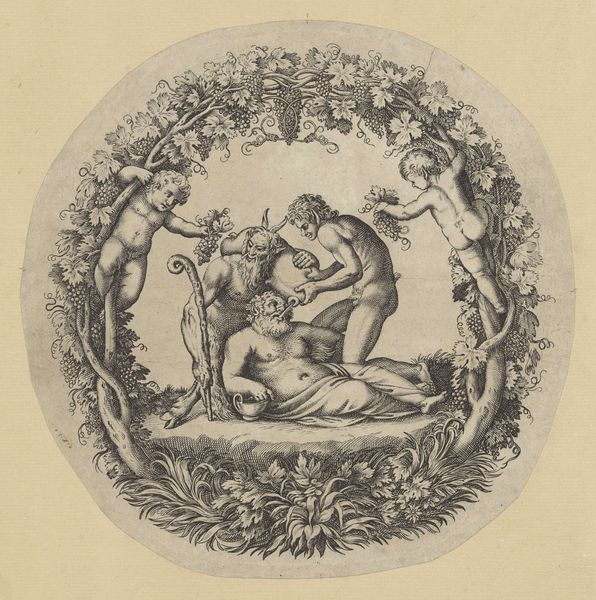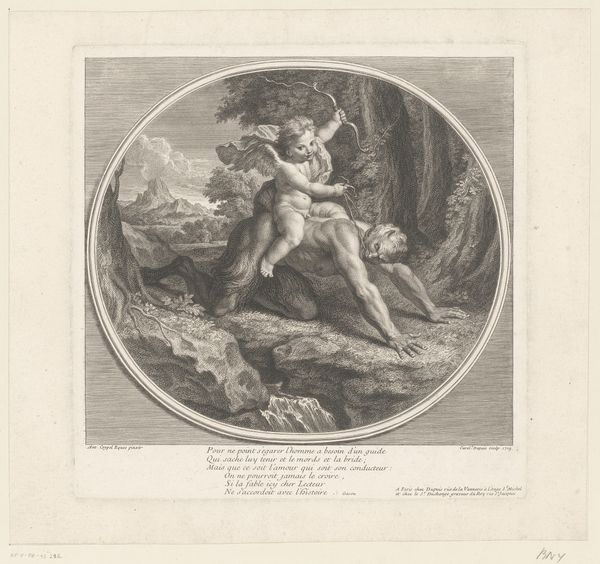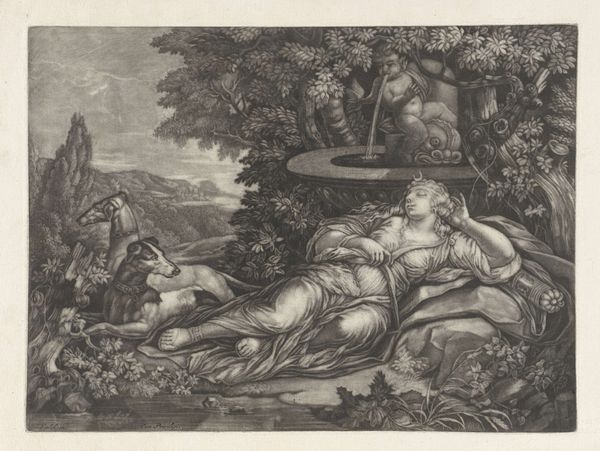
print, engraving
#
baroque
# print
#
old engraving style
#
landscape
#
figuration
#
pencil drawing
#
history-painting
#
engraving
Copyright: Rijks Museum: Open Domain
Editor: Here we have "Juda en Tamar," an engraving by Hendrick Goltzius, created before 1596. It's incredibly detailed, the figures are quite striking. How would you interpret this work? Curator: A fascinating study in line and form. The circular composition immediately draws the eye inward, focusing our attention on the interplay between the figures and the landscape. Notice how the lines define musculature and drapery with equal precision. Editor: The tree on the left is really interesting. What is the function of such dark form in the composition? Curator: Indeed. Observe how the solid darkness of the tree trunk provides a foil to the lighter, more fluid lines describing Tamar's figure. This contrast heightens her prominence, visually enacting a figure/ground relationship central to pictorial composition. Note, too, how the engraver uses hatching techniques to create a sense of depth. The proximity suggests three-dimensionality despite the flatness of the picture plane. Editor: So, would you say it's successful purely as a visual study, beyond any narrative it might be illustrating? Curator: Precisely. The narrative elements are subordinate to the formal concerns of composition, line, and contrast. The effectiveness of the work lies not in *what* is depicted, but *how* it is depicted. We're meant to admire the skill of the hand in creating such compelling forms. Editor: That makes me think about the material itself, an engraving on paper... that intricacy is amazing. I had not appreciated that aspect so acutely before. Thank you! Curator: My pleasure. It’s through attention to form that we can unlock deeper levels of aesthetic appreciation.
Comments
No comments
Be the first to comment and join the conversation on the ultimate creative platform.
